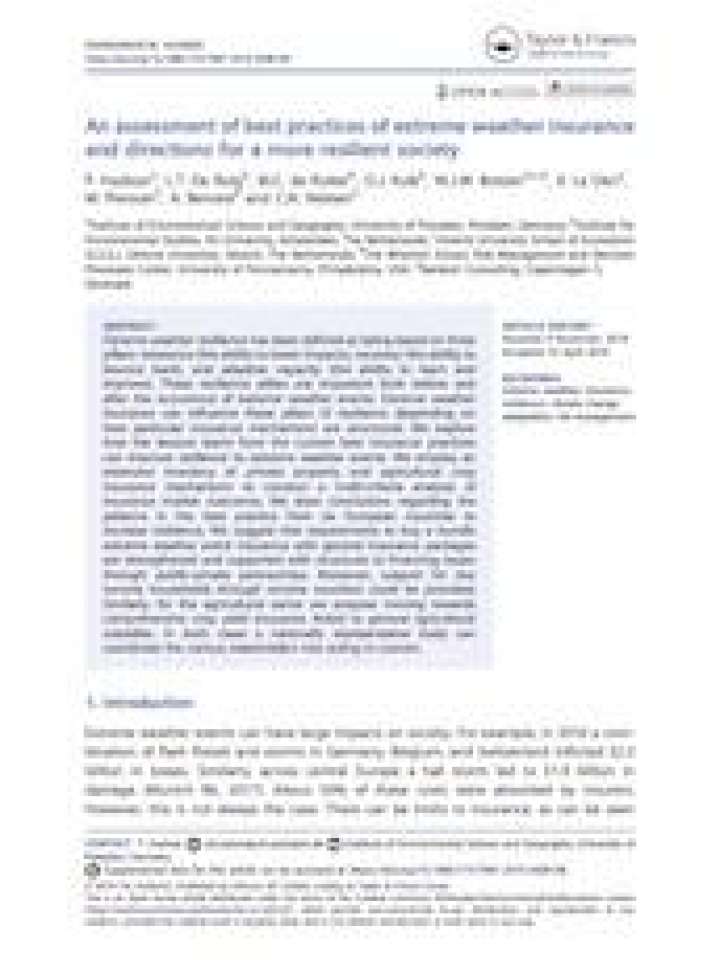An assessment of best practices of extreme weather insurance and directions for a more resilient society
Practitioners have defined extreme weather resilience as being based on three pillars: resistance (the ability to lower impacts), recovery (the ability to bounce back), and adaptive capacity (the ability to learn and improve). These resilience pillars are important both before and after the occurrence of extreme weather events. Extreme weather insurance can influence these pillars depending on how particular insurance mechanisms are structured.
This paper explores how the lessons learnt from the current best insurance practices can improve resilience to extreme weather events. The authors employ an extensive inventory of private property and agricultural crop insurance mechanisms to conduct a multi-criteria analysis of insurance market outcomes. They draw conclusions regarding the patterns in the best practice from six European countries to increase resilience. Finally, the authors discuss how the current best practice could be used to enhance individual and societal resilience against a wide range of extreme weather events and where limitations are currently faced.
The study suggests that requirements to buy a bundle extreme weather event insurance with general insurance packages are strengthened and supported with structures to finance losses through public-private partnerships. Moreover, stakeholders could provide support for low income households through income vouchers. Similarly, for the agricultural sector, the authors propose moving towards comprehensive crop yield insurance linked to general agricultural subsidies. For both private property and agricultural crop insurance, a nationally representative body can coordinate the various stakeholders into acting in concert.
Explore further
